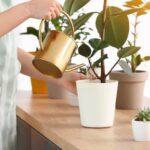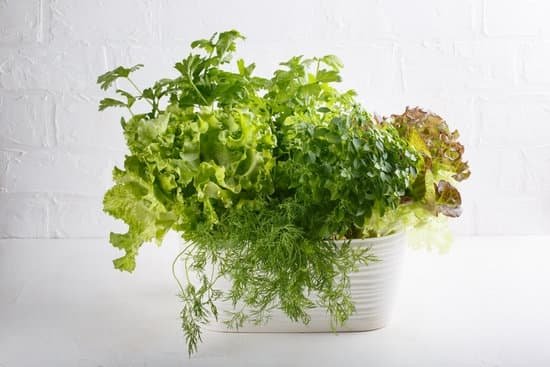Selecting the Right Containers for Your Container Garden
When selecting the right containers for your container garden, there are a few things to consider.
Size: Containers come in all sorts of sizes, from small hanging baskets for a porch or balcony, to large planters and barrels for a larger area or multiple plants. Make sure you choose a size that is suitable for your space and how many plants you want to include in your container garden. If the pot is too small, the plant will be crowded and unable to fully develop or grow; whereas if it’s too big, soil may become waterlogged when watering your plants.
Material: Most commonly used materials are plastic pots, terracotta pots and wooden tubs or window boxes. Plastic pots tend to be affordable and lightweight—great choice if you need something quick and easy—but they also have limited durability since they easily break and fade in harsher weather conditions. Terracotta pots are great choice as they are more durable than plastic but can become heavy to move around as they get wetter. Wooden tubs make excellent containers as well due their look, but should be treated with wood preservative prior to planting so they last longer outdoors.
Drainage: Most perennials do not like soggy soil, so drainage is important when selecting the right potting material! Choose one designed with good drainage holes on the base so excess water will run off and not sit stagnant in the bottom of the pot. If adding further drainage material–such as gravel–is desired any combination of pebbles, sand or even compost can help improve water drainage within each container if needed.
Seasonal Considerations for Your Container Garden
There are several factors to consider when selecting plants for your container garden according to the season and climate. First, you should look at what is available in your area that can resist cold weather or withstand hot temperatures and drought. You can find this information online, in gardening catalogs, or from local nurseries. During colder months, you may need to focus on hardy vegetables such as broccoli and cauliflower or herbs like rosemary and thyme which can handle colder temperatures. Alternatively, many plants are suitable for spring and summer seasons such as tomatoes, peppers, squash, beans, and eggplants.
Furthermore, it’s also important to consider the size of your containers and remember that different types of plants have different space requirements. If you are growing a large plant like tomatoes on a small container it will be overcrowded, so smaller vine plants like cucumbers would be better suited for these spaces. Additionally certain climates may require additional protection from frost and wind by either bringing them indoors when necessary or using coverings such as burlap or plastic sheeting during very cold nights.
Creative Ways to Incorporate Your Container Garden
Adding a vertical element to your container garden. You can go the traditional route and incorporate climbing ivy, pole beans, and other types of vine plants directly into your garden. Or you can be bold and opt for hanging baskets or trained fruit trees in containers. Artistically set up planters in tiers on shelving and trellises to create a beautiful wall of greens.
Decorate your yard with colorful and creative pots. Place large ceramic pots in strategic locations among the smaller pot gardens to add drama as well as practicality. If you’re willing to invest more time and effort, use cement or wood blocks to build outdoor furniture like benches, tables, small pathways, and steps that will double as raised beds for many types plants. Use mosaic tiles laid directly onto the pottery to add sparkle.
Hanging baskets are not just for flowers; they make perfect additions for salads or herbs too. Hang them anywhere you’d like with enough space around them so that when it rains or snows you won’t end up showering your home with muddy water!
Think outside the box when it comes to displays like window boxes- try window sill planters inside kitchen windows! The possibilities are only limited by your imagination- I’ve seen people build an entire herb garden out of hollowed-out logs laid out on a wooden shelf; others have incorporated wicker baskets strung together along porch railings filled with succulents or trailing flowering vines off their balcony railing for maximum visual appeal (and low maintenance).
Benefits of Container Gardening for the Environment
Container gardening is growing in popularity due to its environmental benefits as well as its convenience. By planting in containers, individuals are able to have a garden even if outdoor space is limited. Unlike traditional gardens where plants are planted directly into the ground, container gardens can be placed on patios, decks and balconies. This eliminates the need for large plots of land and excavation.
In addition to being space efficient, container gardening has the added benefit of helping to reduce the amount of water wastage often associated with regular gardening habits. Additionally, soil runoff can also be significantly reduced by using containers with multiple levels, allowing excess water to collect in the lower section rather than running off into other areas such as nearby streams or drainage systems. This helps retain artificial nutrients and conserve natural resources from running away into non-target areas.
Another plus for container gardening is that it requires less manual labor input compared to a traditional garden setting due to its contained design and easy accessibility for planting and weeding; this is especially beneficial for those with physical impairments or busy lifestyles. As an added bonus, weed suppression mats can also be used in conjunction with a plastic underlayment filled with gravel or sand to cut down on weeds germinating in the soil where applicable.
Overall, container gardening offers many advantages over traditional methods while reducing its overall impact on the environment by conserving resources through improved water management and soil retention levels. Since all plants require attractive pots or planters regardless of their location – indoors or outdoors – there’s no reason not give it a try!
Container Gardening PDF Troubleshooting Guide
Container gardening can be a great way to enjoy the beauty of your garden, no matter what space you have available. However, like any type of gardening, it’s likely that problems will arise from time to time. This guide will provide helpful advice on how to identify and address common container gardening issues with both plants and soil.
Pests: The most common pests for container gardening are slugs, aphids, scales and thrips (in addition to plant diseases caused by fungal or bacterial pathogens). These pests can remove large quantities of chlorophyll from the foliage of your plants leading to chlorosis (yellowing leaves); in more extreme cases wilting or even death may occur. Take appropriate action as soon as signs of infestation appear by using natural remedies such as horticultural oil pesticide sprays, hand-picking pests off plants or introducing useful insects into your garden such as ladybugs which feed on these small creatures.
Diseases: Common plant diseases affecting container gardens include root rot, blight and powdery mildew. Plant disease can affect almost every type of plant in a container garden; look out for yellowing leaves, spots or lesions on the leafy surfaces or stems and general poor health. Taking preventative measures such as mulching regularly and removing dead material is essential; if disease has already taken a hold then apply fungicidal sprays or biological control depending on severity.
Nutrient deficiencies: Plants require 16 different minerals/nutrients in order to thrive so understanding how much should be supplied to each type of plant grown is vital in ensuring healthy growth. Symptoms of nutrient deficiency may include yellowing/changing color leaf veins, dry gritty leaves, pale foliage and stunted development. To ensure healthy growth it’s recommended to analyse soil regularly – either through chemical analysis or observance – and supplement with suitable dilutions if required.
Sample Container Garden Designs
Container gardening is a great way to have your own piece of outdoor or indoor green space; and it doesn’t require a big yard or garden plot to do it. From window boxes and hanging baskets to decorative planters, you can use a variety of materials to make your own container garden. The key is to choose plants that will all do well in the same kind of environment, such as perennials, herbs, succulents, and other annuals known for their ability to thrive in limited spaces.
In the accompanying pdf resource, we offer up tips, photos, and diagrams of popular container garden setups as inspiration for creating your own personalized design. There are many approaches you can take when it comes to container gardening. Choose plants with coordinating colours and attractive foliage; experiment with different vessel heights and shapes; and play around with different combinations of sizes and types of plants. Keep in mind that different seasonal arrays allow you to continually switch up blooming flowers with evergreen plants throughout the growing season. There are also exciting possibilities for urban balconies or patios that utilize vertical walls for wall gardens and living walls! From shallow pots 2–3 inches deep, ideal for shorter plants like succulents; all the way up to taller cylinders suitable for tall grasses — each size of pot should fit within an overarching plan that takes into account location, sunlight availability, water needs, soil requirements, and more. With just enough guidance from our resource section on designing container gardens and providing adequate care – any gardener will be able to create beautiful floral displays!

Welcome to my gardening blog! I am passionate about plants and enjoy sharing my knowledge and experiences with others. In this blog, I will write about everything related to gardening, from tips on how to get started to updates on my own garden projects.





